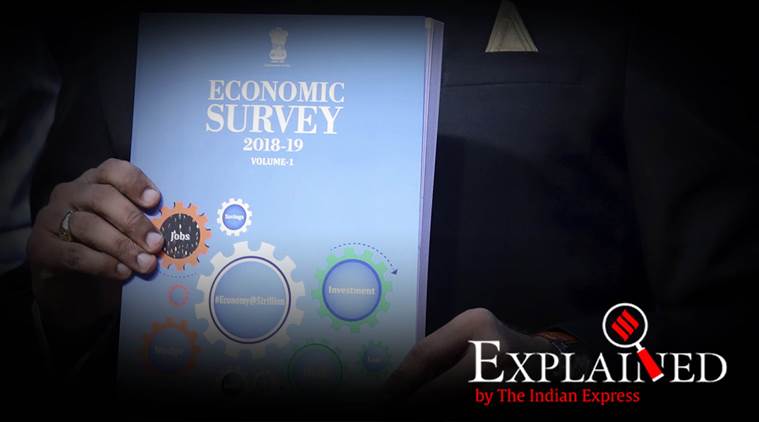The economic survey, the first by new chief economic advisor Krishnamurthy V Subramanian, takes off from the acronym-heavy editions associated with his predecessor, Arvind Subramanian, while it is a tad weak on policy prescriptions.
The government’s economic survey has projected that economic growth in the current fiscal year could rise to 7% from the 6.8% in 2018-19 — the slowest rate of growth in five years.
Macroeconomic Indicators
The survey, presented to parliament on Thursday, has flagged the challenges on the fiscal front following an economic slowdown impacting tax collections amid an expected urge in agri-spending.
It has underlined the need for India to shift gears to accelerate and sustain a real GDP growth rate of 8% in order to achieve the target of becoming a $5 trillion economy by 2025.
It flags the need for a “virtuous cycle” of savings, investment and exports to be catalyzed and supported by a favorable demographic phase required for sustainable growth. Private investment has been highlighted as a key driver for demand, capacity, labor productivity, new technology, creative destruction and job creation.
Explained: Economic Survey 2018-19 big ideas — Rationalise minimum wages architecture
New ideas
The survey, the first by new chief economic advisor Krishnamurthy V Subramanian, takes off from the acronym-heavy editions associated with his predecessor, Arvind Subramanian, while it is a tad weak on policy prescriptions.
The Survey, therefore, lays out an agenda for behavioural change by applying the principles of behavioural economics to several issues including gender equality, a healthy and beautiful India, savings, tax compliance and credit quality. This includes a transition from ‘Beti Bachao Beti Padhao’ to ‘BADLAV’ (Beti Aapki Dhan Lakshmi Aur Vijay Lakshmi), from ‘Swachh Bharat’ to ‘Sundar Bharat’, from ‘Give it up” for the LPG subsidy to ‘Think about the Subsidy’ and from ‘Tax evasion’ to ‘Tax compliance’.
Policy prescriptions
The Survey flags the case for intervention in the case of “dwarfs” (firms with less than 100 workers) despite being more than 10 years old, account for more than 50% of all organized firms in manufacturing by number. In this context, it calls for a sunset clause of less than 10 years, with necessary grand-fathering, for all size-based incentives and a deregulating labor law restrictions to create significantly more jobs, as evident from Rajasthan.
It calls for a need to ramp up capacity in the lower judiciary, including a focus on delays in dispute resolution. Contract enforcement biggest constraint to improve Ease of Doing Business ranking; much of the problem is concentrated in the lower courts.
Calls for policy changes to lower overall lifetime ownership costs and make electric vehicles an attractive alternative to conventional vehicles.
Problem areas
While the investment rate was expected to pick up following improvement in consumer demand and bank lending, the goods and services tax, farm schemes will all pose challenges on the fiscal front, the report said. Fiscal deficit has been pegged at 3.4% of GDP for 2018-19. There are apprehensions of slowing growth, which will have implications for revenue collections.
Crude oil prices are projected to decline in 2019-20, which could push consumption. Flags need to gear up for ageing population; necessitating more healthcare investment, increasing retirement age in a phased manner.
Source: Read Full Article


